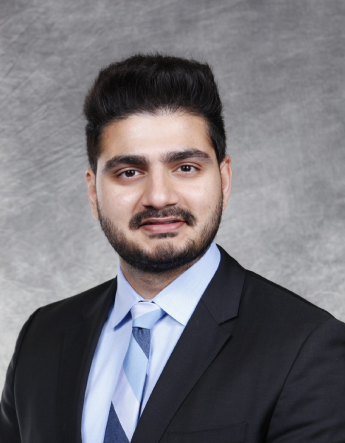Healthy circulation is the foundation of a full and active life—that’s why we do what we do. At RIVEA Vascular, surgery is only a part of our story. Our approach is a cut above the rest. From treating life-threatening aneurysms to preventing strokes and restoring blood flow to save limbs, we combine cutting-edge technology with a deeply personalized approach. Behind every procedure is a commitment to not just solving problems, but helping you stay healthier for years to come.
With Dr. Karthik Mikkineni, a former Stanford faculty and India’s only American board-certified vascular and endovascular surgeon, we bring global expertise, cutting-edge technology, and a hybrid approach—combining minimally invasive and open vascular procedures—to ensure the best outcomes for every patient. As a pioneer in complex aortic interventions, limb salvage, and carotid disease management, Dr. Mikkineni’s leadership ensures that RIVEA delivers world-class vascular care, introducing advanced procedures like Transcarotid Artery Revascularization (TCAR) and fenestrated aortic endografts (FEVAR, EVAR, TEVAR) to India for the first time.
Advanced Vascular & Endovascular Care
for Carotid Artery Disease & Stroke
for Abdominal Aortic Aneurysms (AAA)
for Thoracic Aortic Aneurysm (TAA)
for Abdominal Aortic Aneurysms (AAA)
Looking for information on...
1. Head and Neck
2. Chest and Abdomen
3. Upper Extremity
4. Lower Extremity
- Acute Deep Vein Thrombosis Dangerous blood clot formation in deep veins, typically in legs, that can potentially break loose and cause life-threatening complications like pulmonary embolism.
- Pulmonary Embolism Critical condition where blood clots block lung arteries, causing sudden breathing difficulties and potentially fatal cardiovascular complications.
- Chronic Venous Insufficiency When leg veins struggle to return blood to the heart, it can cause swelling, pain, and skin changes. This condition can lead to venous insufficiency, phlebitis, post-thrombotic syndrome, or venous leg ulcers.
- Varicose Veins Twisted, enlarged veins in the legs that cause aching, swelling, and discomfort. Without management, they can progress to more serious circulatory complications.
- Claudication Leg pain caused by reduced blood flow during physical activity, typically resulting from peripheral artery disease. Patients experience muscle pain that subsides with rest.
- Chronic Limb Threatening Ischemia Advanced stage of arterial disease with severe reduction in blood flow, causing constant pain and high risk of tissue loss. Requires immediate medical intervention to prevent amputation.
- Diabetic Foot Serious complication of diabetes involving reduced circulation and nerve damage. Increases risk of infections, ulcers, and potential limb amputation due to poor wound healing.
- Non-Healing Wounds Chronic wounds that fail to progress through normal healing stages, often caused by poor circulation, diabetes, or compromised immune systems. Can lead to serious infections and tissue damage.
- Gangrene Severe tissue death caused by complete loss of blood supply, typically affecting extremities. Can result from advanced vascular disease, diabetes, or serious infections.
5. Unusual Vascular Problems
6. Vascular Infections
7. Vascular Trauma
Injuries to blood vessels from accidents or surgery that can cause significant bleeding and long-term circulation problems. Immediate medical intervention is crucial to prevent permanent damage.
8. Dialysis Access
World-Renowned Vascular Care in
Our Region


Breaking New Ground - We're proud to be the region's first dedicated vascular center, equipped with imaging technology that sees what others might miss.


Global Care. Local Heart- Our specialists bring techniques and knowledge from across the globe directly to your community.


Gentle Touch, Powerful Healing- Our minimally invasive approaches mean you spend less time recovering and more time living.


Seamless, End-to-End Care – From diagnosis to recovery, all aspects of your vascular health are handled under one roof.
Take control of your vascular health today.
Schedule a consultation with our specialist.
Dr. Karthik Mikkineni
MD, FACS, FSVS, RPVI
Chief Vascular Surgeon
A Visionary Leader in Vascular & Endovascular Surgery
Dr. Karthik Mikkineni is an internationally recognized vascular and endovascular surgeon, known for his pioneering work in complex aortic interventions, limb salvage, and carotid disease management. As the Chief of Vascular and Endovascular Surgery at the Oklahoma City VA Health Care System, he has led transformative advancements in patient care, surgical innovation, and physician training. Now, he brings his unparalleled expertise to India as the founding director of RIVEA Vascular Institute —a premier center for cutting-edge vascular and interventional radiology care in Hyderabad.

Dr. Karthik Mikkineni
MD, FACS, FSVS, RPVI
Dr. Mikkineni’s career has been shaped by a relentless pursuit of excellence. A former Assistant Professor of Surgery at Stanford University School of Medicine, he played a pivotal role in establishing Stanford’s Community Academic Practice (CAP) and Advanced Aortic Center. His leadership expanded access to advanced vascular care and set new benchmarks in outpatient surgery, hybrid ORs, and interventional excellence. Recognized as a Distinguished Faculty Member at Stanford, he led national training programs, secured NIH and AHA research grants, and contributed to groundbreaking developments in aortic aneurysm management.

